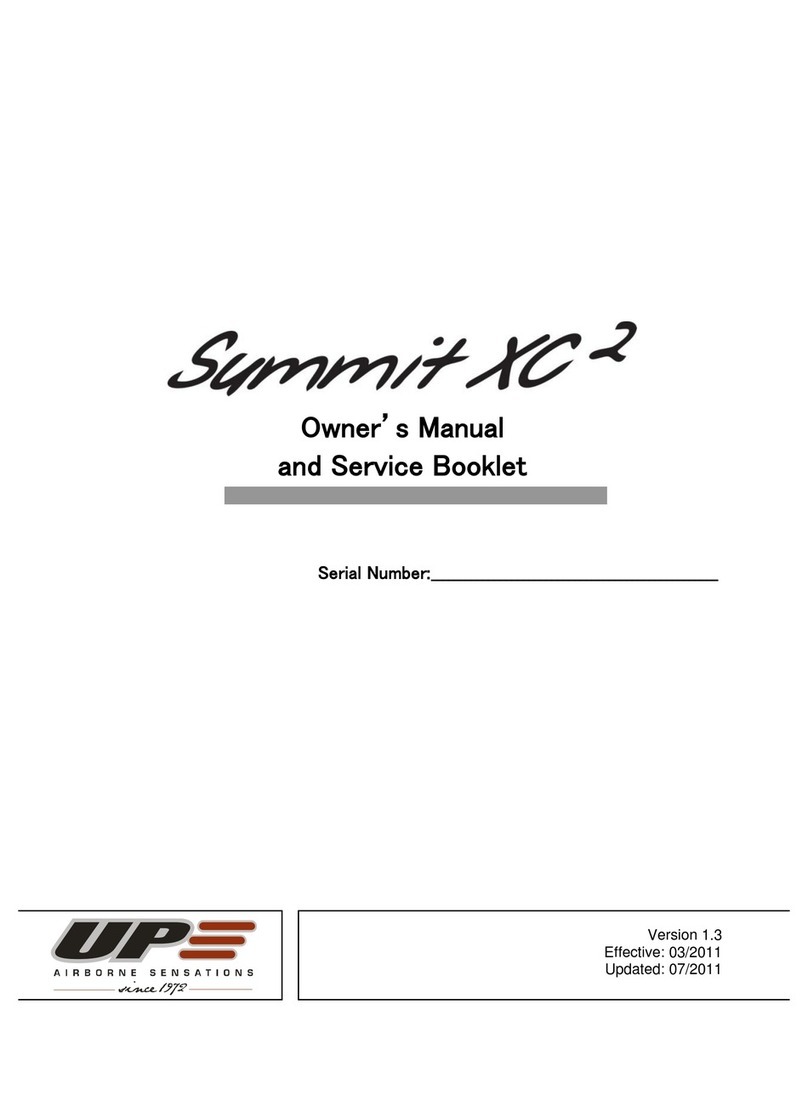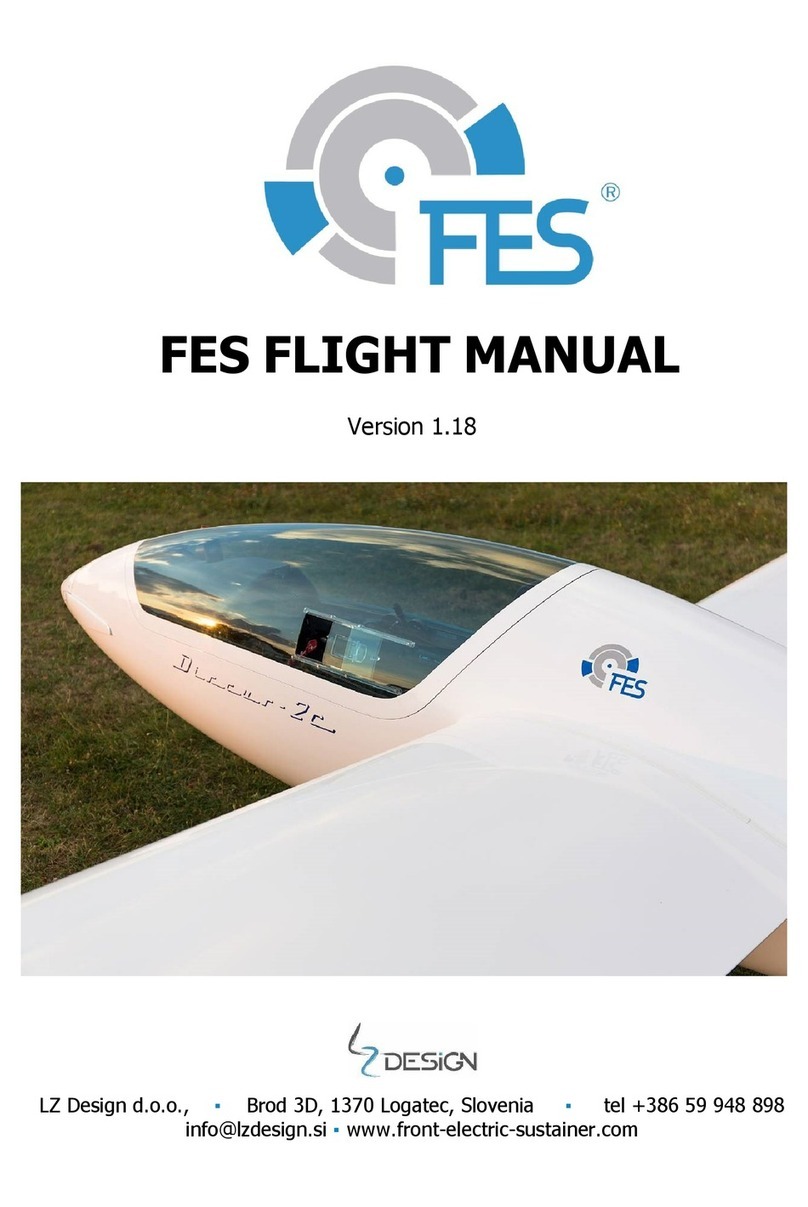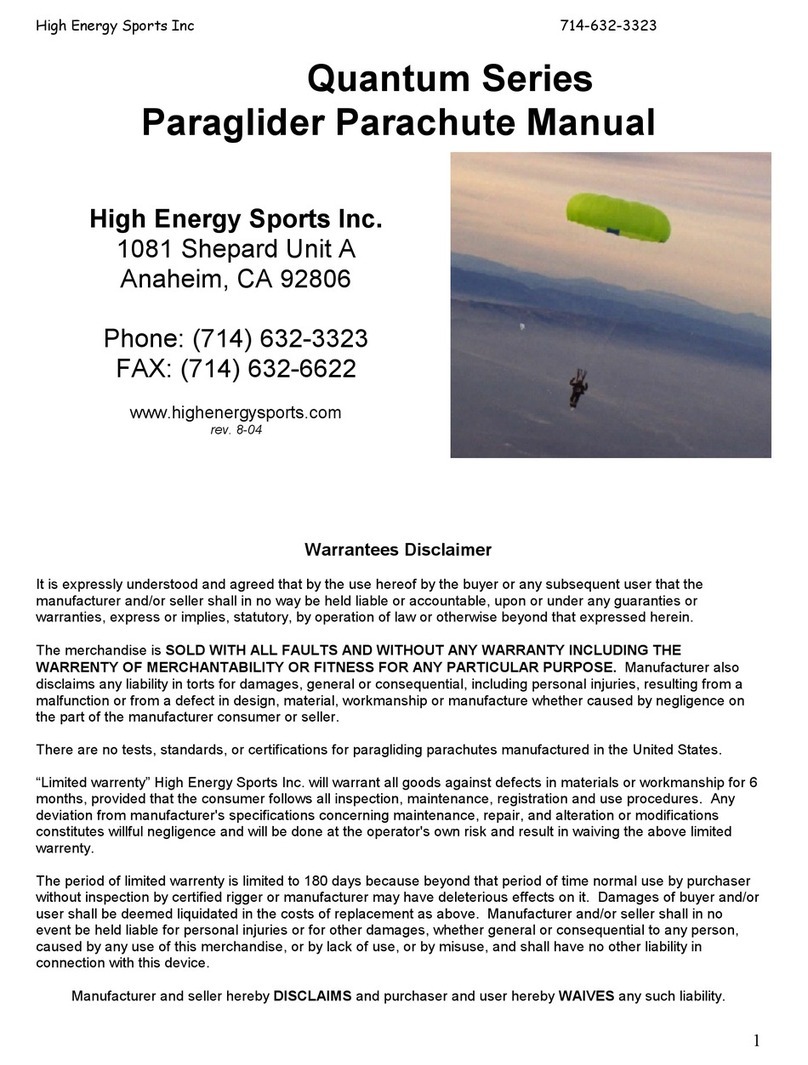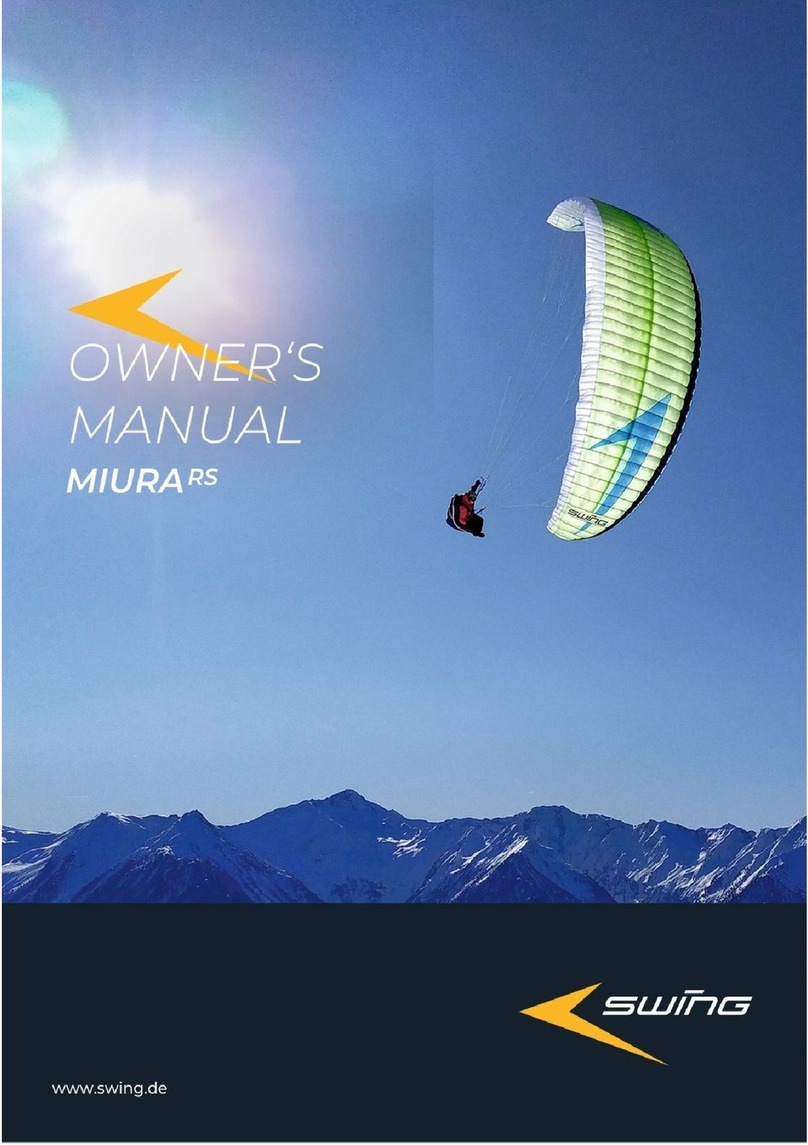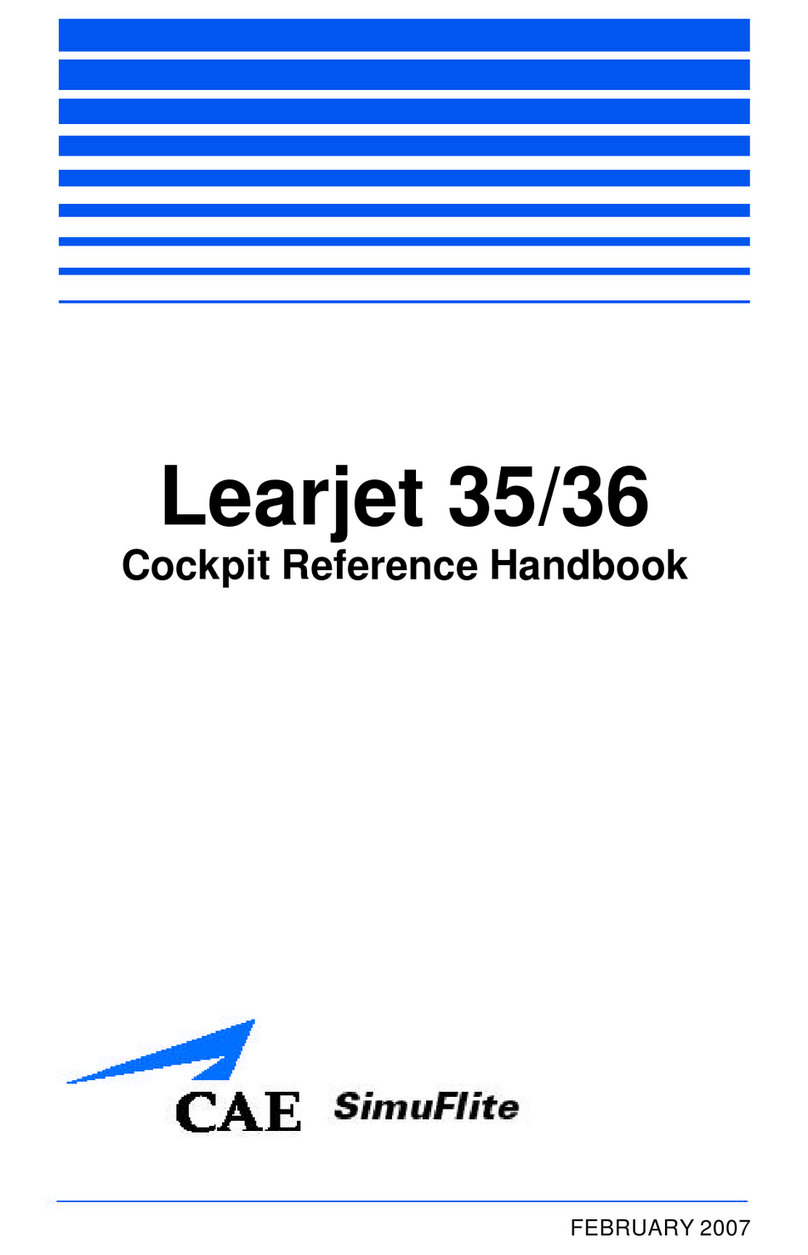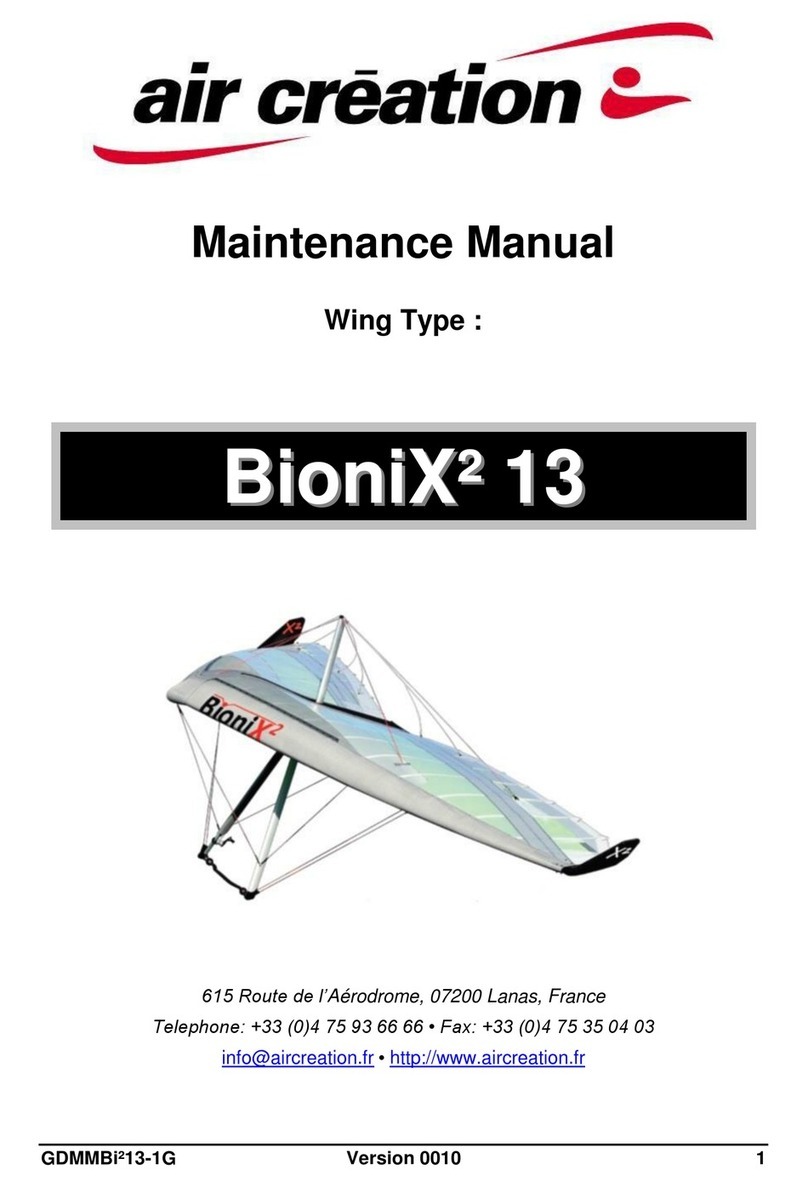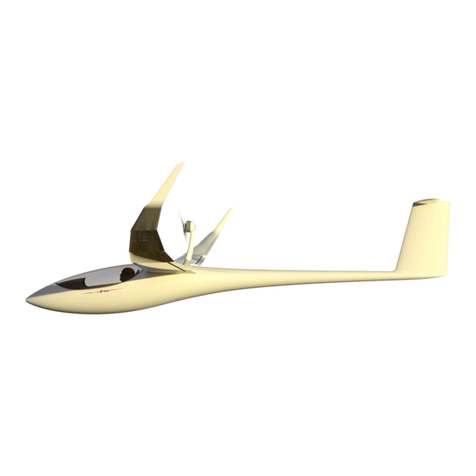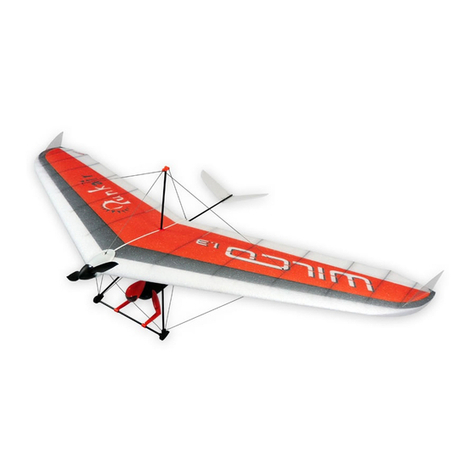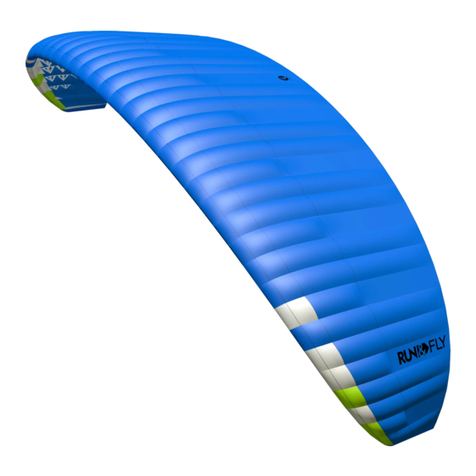sky rider X-72 JETLINER User manual

User’s Guide for Model DR472-v2932-01


Warnings & Precautions
Important Safety Instructions
• Read and follow all instructions.
• Keep these instructions for future reference.
• Heed all Warnings.
• Intended for children ages 14 and higher. Adult
supervision is required.
• Only use attachments/accessories specied by the
manufacturer.
• Before ying, always check the body, rotors, and
battery for any damage or obstructions.
• Battery should be free from cracks or swelling.
• Keep the rotors clear of any obstructions and body
parts to avoid potential damage and injury.
• Manufacturer and dealer assume no liability for
accidental damages from improper use or installation
of parts, or from damage incurred from worn or
broken parts.
• Pilots are responsible for their actions and any
damage caused from improper use.
• Pilots should keep the craft in sight at all times
during ight. If you lose sight of the craft at any time,
power down and cease ight immediately.
• Only y in large, open areas that are free from
obstacles or potential hazards, such as trees, power
lines, ceiling fans, and the like.
• Flying over bodies of water is not recommended.
• Flying at night is not recommended.
• Never try to retrieve the craft from areas you cannot
safely reach, such as rooftops or trees.
• Never launch the craft from your hand.
• Never leave the craft unattended while it is powered
on or while the battery is charging.
FCC Warnings
Warning: Changes or modications to this unit not
expressly approved by the party responsible for
compliance could void the user’s authority to operate
the equipment.
NOTE: This equipment has been tested and found to
comply with the limits for a Class B digital device,
pursuant to Part 15 of the FCC Rules. These limits are
designed to provide reasonable protection against harmful
interference in a residential installation. This equipment
generates, uses, and can radiate radio frequency energy
and, if not installed and used in accordance with the
instructions, may cause harmful interference to radio
communications. However, there is no guarantee that
interference will not occur in a particular installation. If
this equipment does cause harmful interference to radio
or television reception, which can be determined by
turning the equipment o and on, the user is encouraged
to try to correct the interference by one or more of the
following measures:
• Reorient or relocate the receiving antenna.
• Increase the separation between the equipment and
receiver.
• Connect the equipment into an outlet on a circuit
dierent from that to which the receiver is connected.
• Consult the dealer or an experienced radio/TV
technician for help.
Additional Warnings & Precautions
• WARNING: To reduce the risk of re or electric
shock, do not expose this apparatus to rain, moisture,
dripping, or splashing.
• CAUTION: Use of controls or adjustments or
performance of procedures other than those specied
may result in personal injury.
• WARNING: Changes or modications to this unit
not expressly approved by the party responsible for
compliance could void the user’s authority to operate
the equipment.
• CAUTION: Danger of explosion if battery is
incorrectly replaced. Replace only with the same or
equivalent type.
• Lithium batteries, like all rechargeable batteries, are
recyclable and should be recycled or disposed of
according to state and local guidelines. They should
never be disposed of in normal household waste,
and they should never be incinerated, as they might
explode. Contact your local government for disposal
or recycling practices in your area.
• WARNING: Shock hazard - Do Not Open.
• Battery shall not be exposed to excessive heat such as
sunshine, re, or the like.
Keep new and used batteries away from children. If
the battery compartment does not close securely, stop
using the product and keep it away from children.
• If you think batteries might have been swallowed or
placed inside any part of the body, seek immediate
medical attention.
• Do not mix old and new batteries.
• Completely replace all old batteries with new ones.
• Do not mix alkaline, standard (carbon-zinc), or
rechargeable (ni-cad, ni-mh, etc) batteries.
• Batteries should be recycled or disposed of as per
state and local guidelines.
WARNING : This product can expose
you to chemicals including lead, which is
known to the State of California to cause
cancer and birth defects or other reproductive
harm. For more information go to www.
P65Warnings.ca.gov. This product meets and
complies with all Federal regulations.

4
Table of Contents
X-72 JETLINER – 5
Features
Includes
Assembly – 6
Overview – 7
Craft Layout & Features
Remote Control – 8
Functions
Battery Installation
Charging the Battery – 10
Battery Charging Procedure
Flying – 11
Craft/Remote Link
In Flight Controls
When You’re Done Flying
Trim Adjustment – 14
Setting Pitch Trim & Countering Drift
Pitch Settings Reset
Flying Tips & Features – 16
Tips for Safe Operation
Speed Setting
Parts & Repair – 17
Parts Replacement
Rotor Replacement
Troubleshooting – 18
Customer Support – 19
Contact Information
International Support
Warranty

5
X-72 JETLINER
Features
• 3 speeds: low, medium, high
• Control distance: up to 656 feet
• 3-channel control
• LED lights
• Operating time: 8-10 minutes
• Charge time: around 120 mins
Includes
• 2.4 GHz remote control: requires 4 AA
batteries (not included)
• Built-in rechargeable lithium-polymer
battery
• USB cable for battery recharge
• 3 replacement rotors, 4 replacement
wheels and 6 screws
• User’s guide & warranty

6
Assembly
Fuselage
Wheels
Plane Body
Plug the fuselage into the socket on the
plane.
Slide the Fuselage into the plane body
slot.
Slide the Wheels into the plane wheel
slots at the bottom of the plane.
Secure the Fuselage onto the plane using
the included screw.

7
Overview
Craft Layout & Features
Rotor Rotor
WingsWings
FRONT
Rudders

8
Remote Control
Functions
Speed Setting
Low/Med/High
Throttle
Increase Throttle:
move forward
Decrease Throttle:
Slow down/stop
Indicator
light ON/
OFF
Press to turn
lights ON/
OFF.
Pitch
Reset
Press to
restore pitch
settings to
default.
Directional
Control
RESET LIGHTS
PITCH PITCH
Emergency
Stop
Press and hold to
immediately stop
the craft.
Pitch Trim
Correct nose angle
Up/Down.
Power Switch
& Indicator
Light

9
AA
AA
AA
AA
Battery Installation
Insert 4 x AA batteries
(not included).
Use a screwdriver to
remove battery cover.
Remote Control

10
Charging the Battery
Battery Charging Procedure
The craft’s battery must be charged before it can be flown. Before charging, be sure the
craft and remote control are powered OFF to avoid risk of injury or damage.
Connect the charging cable (included) to the USB port of a powered ON computer or USB
power adapter (not included), then connect the charging plug to the unit. Be sure to
correctly match the plug to the charging port or damage may occur. Charge fully before
use for maximum performance and flight time. Charging time is approximately 120 mins.
While charging, the cable will display a red light.
When charging is complete, the light will turn OFF.
REMINDER: Do not charge overnight. Do not leave unattended while charging.

11
Flying
Craft/Remote Link
Before flying, the craft and the remote must be linked together and the gyroscopes on the
craft must be allowed to calibrate.
Begin with the craft and remote powered OFF.
Step 1
Power the craft ON by flipping the ON/OFF
switch located at the bottom of the craft.
The LED lights will blink in unison as the
craft searches for a signal from the remote.
Step 3
Power ON the remote. The light on the
remote will blink as it searches for the
signal from the craft.
RESET LIGHTS
PITCH PITCH
Step 4
Push the left control stick (Throttle) fully
forward, then pull the stick fully rearward,
and wait for a chime. When this chime has
sounded the craft is ready to fly.
RESET LIGHTS
PITCH PITCH
Power

12
Step 2
Place the craft on a flat, level surface. This
is necessary for a clean take off.
You may also start flight by throwing the
craft forward in a straight line.
Step 5
Use the left control stick (Throttle) to contorl the speed of the craft.
Once the craft reaches the correct speed, push down on the right control stick
(Directional Control) to lift the craft for flight.
RESET LIGHTS
PITCH PITCH

13
In Flight Controls
When You’re Done Flying
When landing, descend the craft using the
directional control, then slowly pull the
Left Control Stick (throttle) rearward to
power down and wait for the rotors to stop
spinning. Power OFF the remote BEFORE
powering OFF the craft. This will ensure
that no signals are accidentally sent by the
remote, reducing the chance of injury. After
this is done, it is safe to pick up and power
OFF the craft.
Input InputManeuver Maneuver

14
Trim Adjustment
Setting Pitch Trim & Countering Drift
Even after the craft is calibrated, it may show a tendency to drift while airborne. Adjusting
the Pitch will help counter this effect and allow for better control the craft.
• To avoid potential damage, adjust the trim while attempting a stable hover.
• Try to avoid making any exaggerated movements with the flight controls.
• Adjust one Pitch trim setting at a time to avoid confusion.
Adjusting the trim will help with drift but it will not entirely eliminate it. Turbulence and
other factors may still influence the craft’s flight characteristics.
Pitch trim controls nose
angle Up/Down.
RESET LIGHTS
PITCH PITCH

15
Pitch Settings Reset
If the craft is still experiencing difficulty flying or is behaving erratically, it may help to reset
the craft and remote to default settings.
Be sure that the remote and craft are linked and begin on a flat level surface. Perform the
reset by pressing the Reset The LED formation lights will blink while the craft resets, when
the LEDs stop blinking the reset is complete and the craft is ready to fly again.
Do not attempt to perform the reset procedure while the craft is in the air.
RESET LIGHTS
PITCH PITCH
Pitch Reset

16
Flying Tips & Features
Tips for Safe Operation
• It is recommended to only fly large, outdoor, open spaces that are free of obstacles like
power lines, trees, cars, etc.
• Stand behind the craft when first taking off, so that you and the craft are facing the
same “forward” direction. This will help with orientation when the craft is airborne.
• Novice pilots should move the controls slowly and deliberately to get used to the
craft’s flying characteristics. Try using one control at a time.
• Practice basic flight operations like take off, and landing.
• If you crash, power down the engines IMMEDIATELY to reduce the chance of damage
or injury.
• If anything obstructs the propellers for any reason, throttle down IMMEDIATELY and
safely clear the obstruction. Check for possible damage before flying again.
• This model is composed of many precision electrical components. It is critical to keep
the craft and equipment away from water and other contaminants. The introduction
or exposure to water or moisture in any form can cause the model to malfunction
resulting in a crash or . Do not operate or expose To rain or moisture.
Speed Setting
Press the Speed button on the remote control once to set the craft’s speed.
• Low: Provides smooth and predictable control of the craft. The remote will chime once
to indicate the low speed setting.
• Medium: The craft will move and respond faster to all control inputs. The remote will
chime twice to indicate the medium speed setting.
• High: Highest setting for maximum performance. The remote will chime three times to
indicate the high speed setting.

17
REMINDER: Pilots are responsible for any damage caused by improper use.
Parts Replacement
Standard parts such as extra batteries and remotes are available online for purchase when
in stock. However, any non-standard parts such as cameras, screws, bodies, SD cards etc.
Rotor Replacement
To replace a rotor, gently pull it upwards and off of the motor shaft, then place the new
rotor on the shaft and gently push down. Take special care not to bend or break the motor
shaft. If the rotors are difficult to remove by hand, try a small set of tweezers or pliers.
The craft comes with 4 replacement rotors.
Parts & Repair
Remove
and replace
rotor
Wing

18
If you are experiencing problems using or flying the craft, consult this table.
Troubleshooting
PROBLEM POSSIBLE CAUSES SOLUTION
Craft does not
respond to controls.
• No power to remote
or craft.
• Craft is out of range.
• Check remote batteries,
replace if needed.
• Check craft battery, be
sure it is fully charged.
• Be sure the remote has
an unobstructed line of
sight to the craft.
• Remain within the
remote’s 656 ft. range.
Craft is difficult
to control or flies
erratically.
• Low battery power.
• Pitch trim may be too far
out of spec.
• Charge the battery.
• Power OFF remote and
craft and reconnect
Craft drifts
while in flight.
• Pitch trim not set or
needs adjustment.
• Adjust trim settings
(see pg. 13).
Craft suffers from
mechanical trouble.
• Damage to body,
rotors or other major
components.
• Repair or replace parts
as needed.
LED lights ON and
blinking but craft
does not respond
to controls.
• Low battery power.
• Remote and craft are no
linked.
• Recharge the battery.
• Relink remote and craft
(see pg. 10).

19
International Support
To download this User’s Guide in English, Spanish, and French, or to get answers to
frequently asked questions, visit the support section at: www.gpx.com
Para descargar este Manual del Usuario en inglés, español y francés, o para obtener
respuestas a preguntas frecuentes, visite la sección de apoyo en: www.gpx.com
Pour télécharger ce guide de l’utilisateur en anglais, espagnol ou français, ou pour obtenir
des réponses à des questions fréquemment posées, consultez la rubrique d’assistance sur:
www.gpx.com
Contact Information
Website: www.gpx.com
Phone Support: 1-888-999-4215
Warranty
See included 30 Day Warranty for warranty
information. Warranty and the most up-to-
date version of this User’s Guide can also be
found at: www.gpx.com
Protect for Today
Sustain for Tomorrow
Made
Green
Copyright © 2022 Digital Products International (DPI, Inc.)
All other trademarks appearing herein are the property of their respective owners.
Specifications are subject to change without notice.
Customer Support
Table of contents
Popular Aircraft manuals by other brands
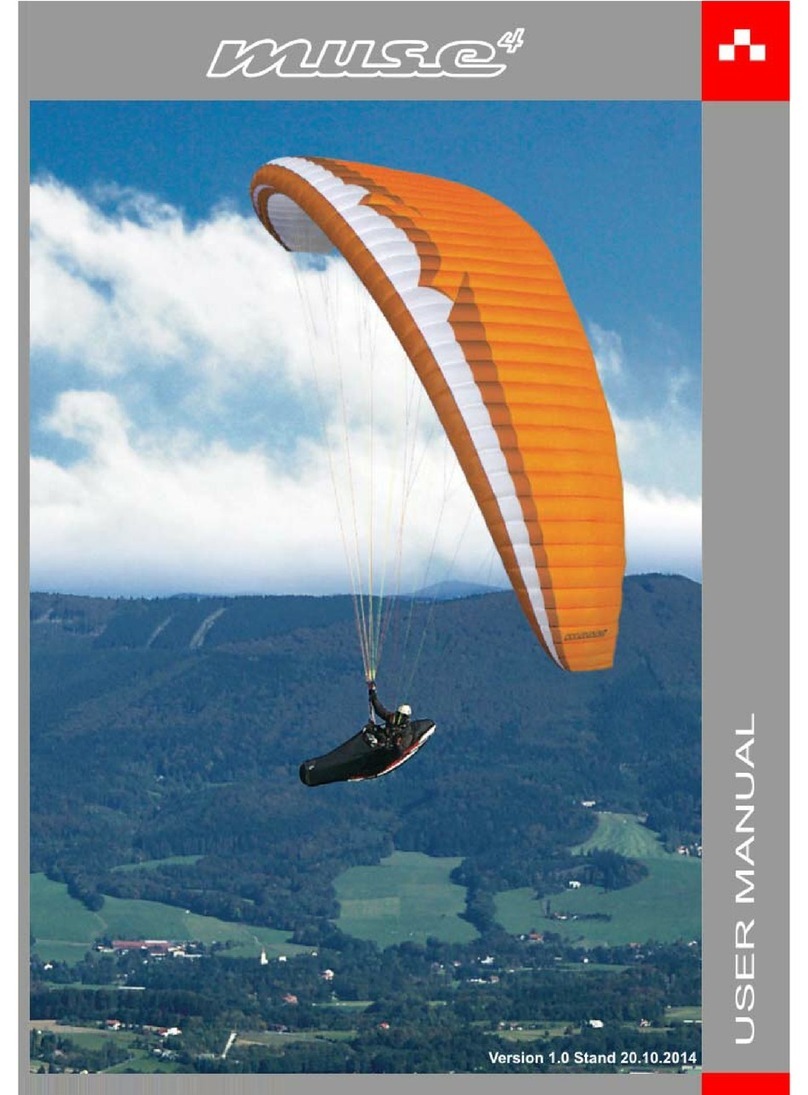
MAC PARA
MAC PARA Muse 4 user guide

AIR TRACTOR
AIR TRACTOR AT-402A quick start guide

Wills Wing
Wills Wing Alpha 180 Owner's service manual

ICARO paragliders
ICARO paragliders ICE user manual
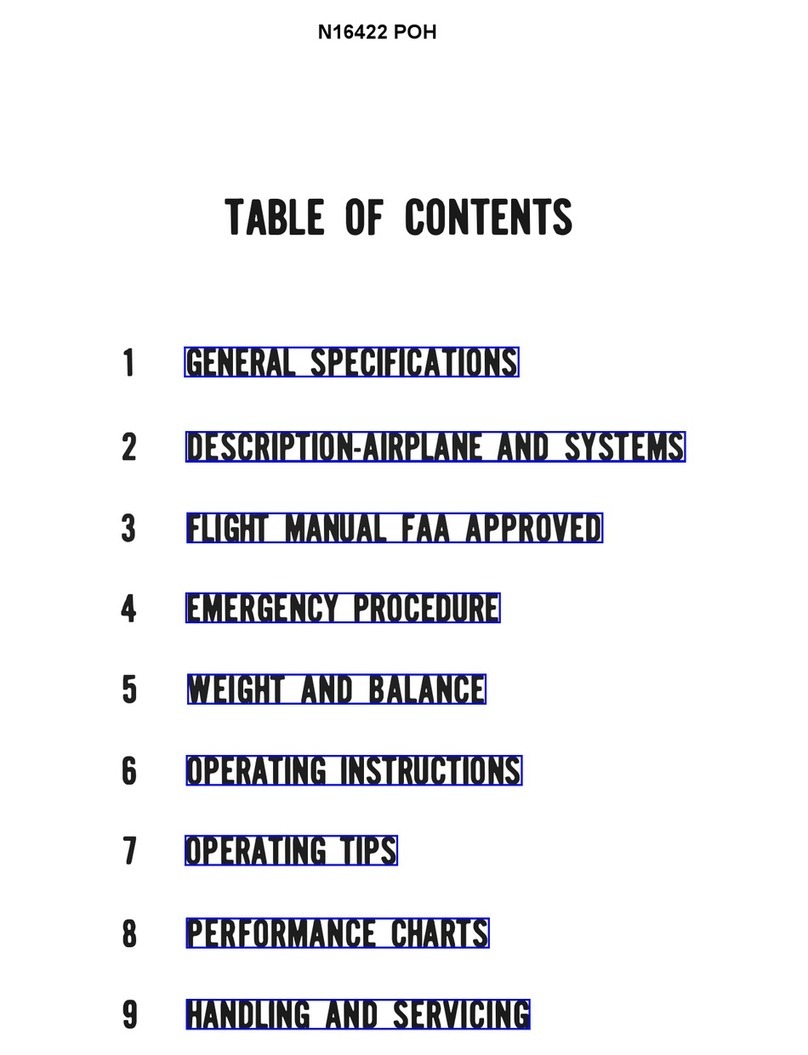
Piper Aircraft Corporation
Piper Aircraft Corporation Cherokee PA-28R-200 operating instructions
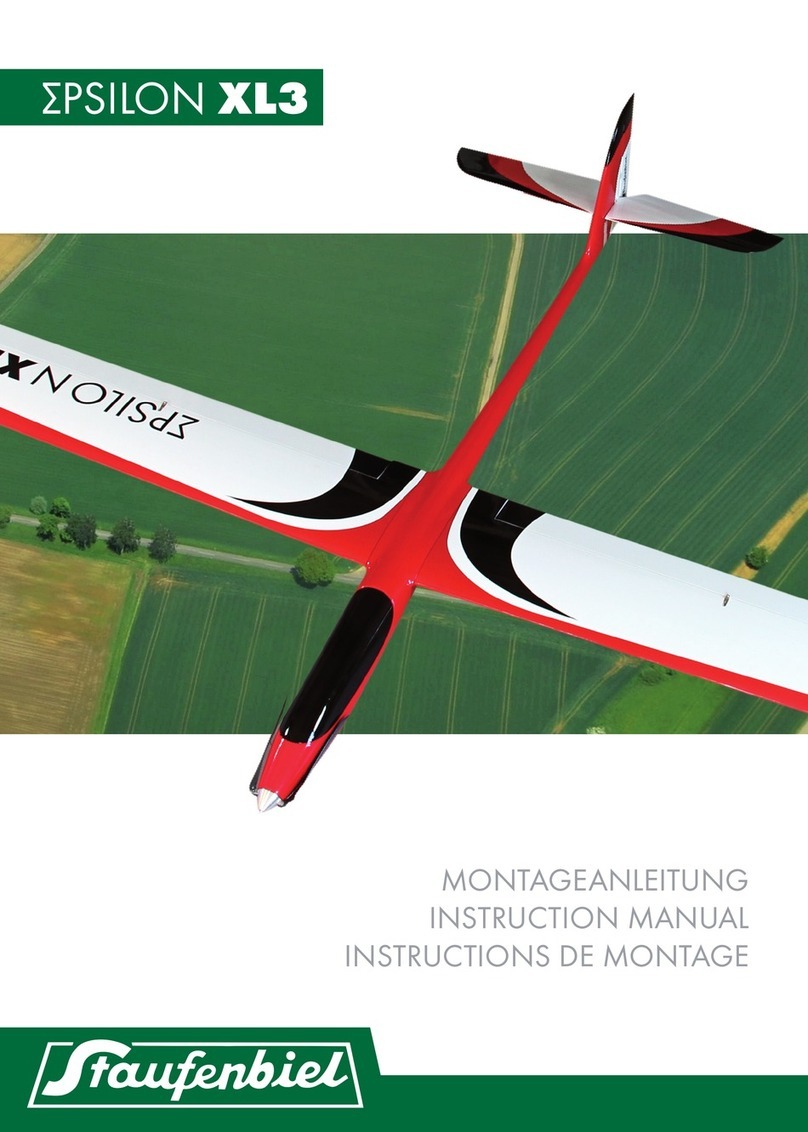
Staufenbiel
Staufenbiel EPSILON XL3 instruction manual
